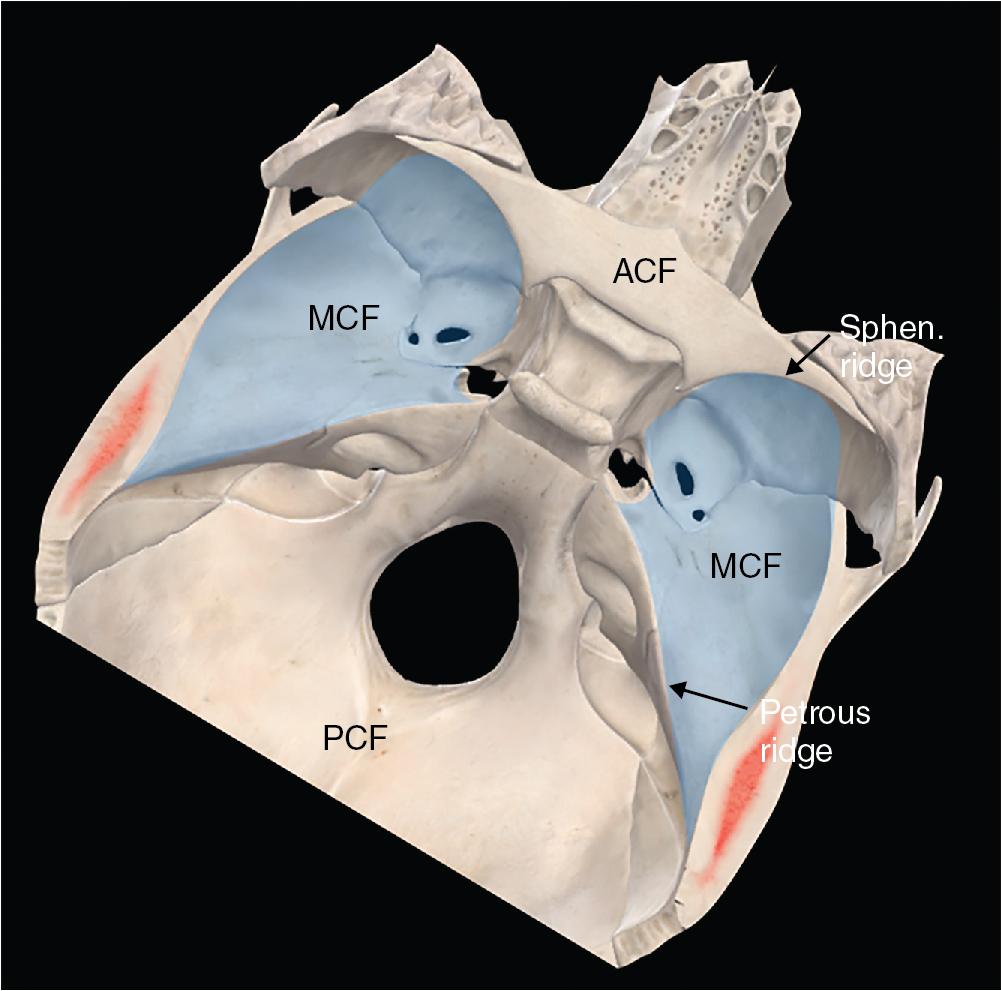Physical Address
304 North Cardinal St.
Dorchester Center, MA 02124
The skull base represents the inferior segment of the cranium and traditionally is arbitrarily divided into three segments known as the anterior, middle (MCF), and posterior cranial fossae. From a surgical perspective, relevant neurovascular and anatomic functional structures must be recognized and preserved through the different approaches to the MCF to avoid potential complications. , This chapter reviews the surgical anatomy and relevant structures that must be recognized during approaches to the MCF. We schematically subdivide the anatomic description into intracranial and extracranial aspects to illustrate its neurovascular contents and the topographic anatomy of the structures surrounding it. These structures are indeed of paramount importance for surgeons who intend to approach the MCF.
The MCF is located between the anterior to the posterior cranial fossa and is concave shaped. It is constituted by a medial segment surrounded by two paired lateral components. The medial segment is centered on the sella, and the lateral component has an anterior wall and a floor. The anterior wall is formed by the sphenoid ridge superiorly and the anterior portion of the greater sphenoid wing inferiorly. The floor, an almost flat surface tilted anteriorly, is conformed by the greater sphenoid wing, a portion of the temporal bone squama, and the superior surface of the petrous segment of the temporal bone. The posterior edge of the middle fossa is the petrous ridge, where the petrous temporal bone drops inferiorly at approximately a 90-degree angle, forming the lateral border of the posterior cranial fossa. The medial segments of the posterior border are formed by the dorsum sellae and the posterior clinoid process ( Fig. 7.1 ).

Become a Clinical Tree membership for Full access and enjoy Unlimited articles
If you are a member. Log in here